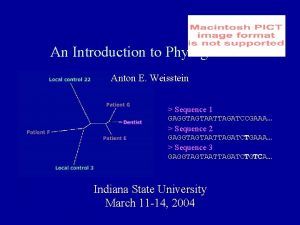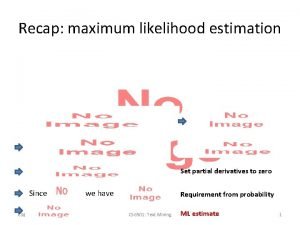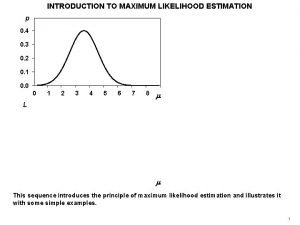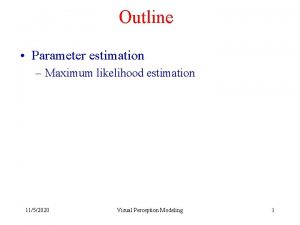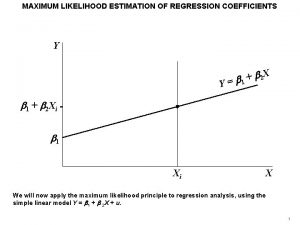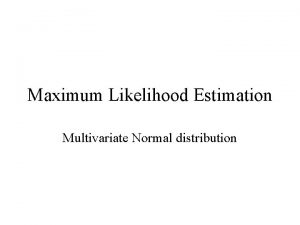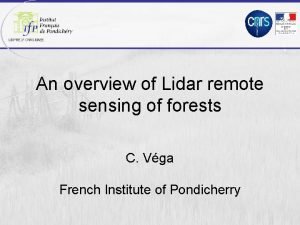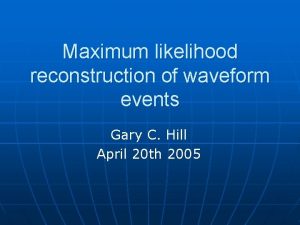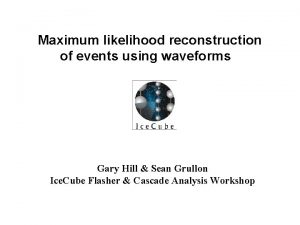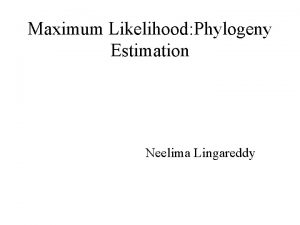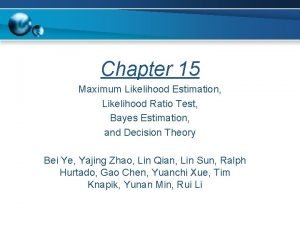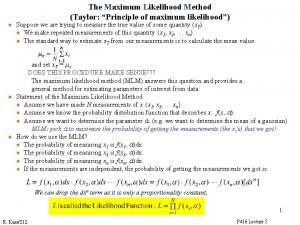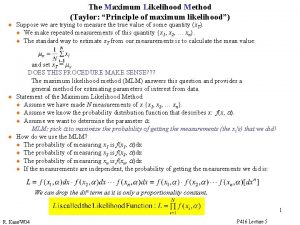Maximum likelihood reconstruction of waveform events Gary C















- Slides: 15

Maximum likelihood reconstruction of waveform events Gary C. Hill April 20 th 2005

The problem…. . n n We record waveforms in the OMs These are superpositions of the OM response (time and amplitude smearing) to individual photons that arrive at the OM They can look quite complicated (several photons close in time that superpose) … or quite simple (e. g. if a single photon arrives, or several arrive separated by a large spacing in time, or a lot arrive, canceling out fluctuations and leaving a good estimate of the photon density observed)

Ideal case – MLE reconstruction where the OM response is a delta function n In this case we know exactly when each photon arrived The OM time response function is a δ-function No fluctuations in amplitude either – 1 unit of charge under the δfunction after the OM

Observed and expected photon distributions n n n Call the observed photon distribution f(t) (could be a set of times of individual photons, or a continuous function describing a large number or superposed photons) The expected distribution of photons μp(t) is given from a simulation (photonics, PTD) or analytically (Pandel function) p(t) is normalised, μ is the total expectation

Probability of f(t) given p(t)? n Suppose we bin the distributions into k bins

Probability of {ni } | {μi} ? Product of Poisson probabilities over bins:

Probability of f(t) given p(t)?

What is this form? Multinomial distribution – what is the probability of arranging exactly N events into k bins Poisson distribution – what is the probability of observing N events given the mean rate μ

Take the negative log constant density terms – “phit-pnohit” sum over photons of log p – usual “timing likelihood” – only shape dependent

Continuous forms of f(t) and p(t)? n Since we assumed a δ-function response of the OM, we can make our binning infinitesimally small and the log likelihood takes the form again, just sum of log p over all photons!

What if the OM response is not a δ-function? n δ-function response, -log. P for one photon is

Non δ-function OM response? n n Define a non δ-function response, Φ(t-t 1), which simply spreads the photon in time, i. e. Φ(t-t 1) still normalised What is

n n Try simply replacing δ(t 1) with Φ(t-t 1) If log p(t) is slowly varying over the region of t where Φ(t-t 1) is non-zero, then and the formulation would still work n This is the case in our OMs… short pulses relative to the scale of the expected distribution of photon times…

However…. . n n n The OM has an amplitude response doesn’t map each photon to same amount of output waveform area… For large numbers of photons forming a waveform, the amplitude fluctuations would cancel out and f(t) would be a good proxy for the true photon distribution Need to think a bit more about the cases where only a small number of photons are seen. . . maybe add a OM amplitude response term into the formulation

Conclusion n If you believe that the OM output waveform, f(t), is a good proxy for the true photon distribution, then the log likelhood is basically the integral over the product f(t) log p(t), where p(t) is the normalised expected photon distribution
 Maximum parsimony vs maximum likelihood
Maximum parsimony vs maximum likelihood Maximum likelihood vs maximum parsimony
Maximum likelihood vs maximum parsimony Lsa uva
Lsa uva Maximum likelihood estimator variance
Maximum likelihood estimator variance Maximum likelihood
Maximum likelihood Pgm
Pgm Maximum likelihood
Maximum likelihood Mle formula
Mle formula Full information maximum likelihood mplus
Full information maximum likelihood mplus Ppdf
Ppdf Mle of variance
Mle of variance Nrmd
Nrmd Absolute maximum and minimum
Absolute maximum and minimum Mutually exclusive vs non mutually exclusive
Mutually exclusive vs non mutually exclusive Frequency domain to time domain
Frequency domain to time domain Full waveform lidar
Full waveform lidar

